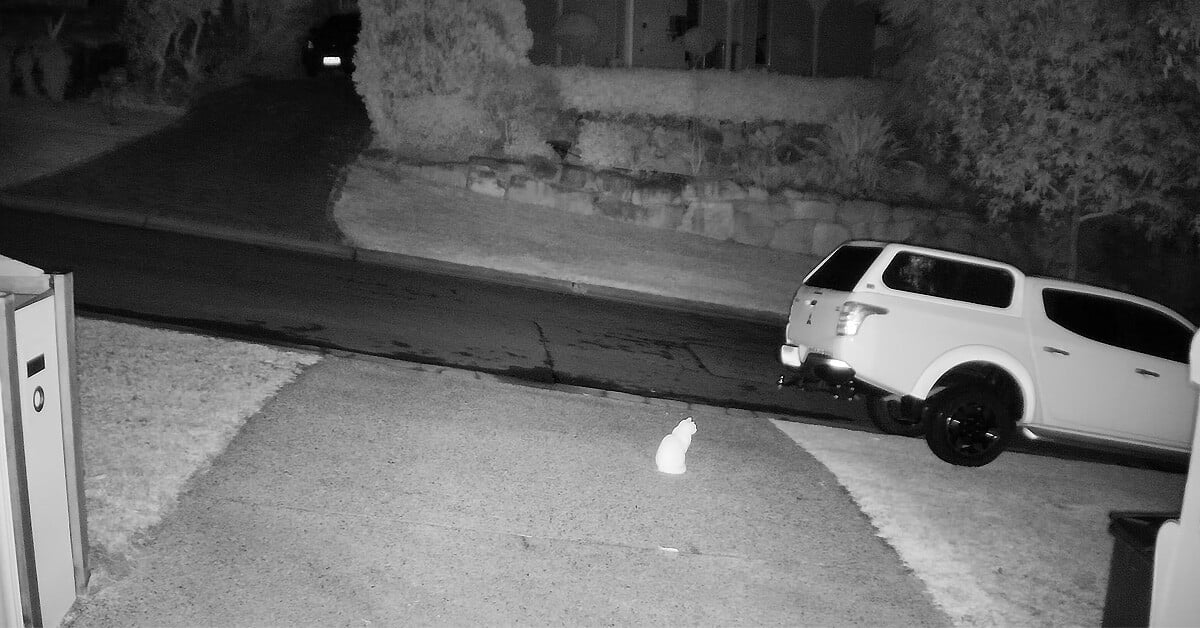
Intro
There are so many cameras on the market, ranging from low quality diy kits to high quality installed security systems, from no name brands to reputable brands like OzSpy, HikVision, Dahua, etc., each having it’s own ranges of cameras with different features and performance. So exactly what makes a great night vision camera, or better still, are there things to look out for?
The answer is yes, there are a couple of areas to look for, one being the sensor brand and model, the other is the LED array, both of which we will cover here.
A lot of new cameras now come with white light LEDs that come on when they detect an intruder. These are great for out the front, but keep in mind they will be switching on and off several times per day, so if you have them outside a bedroom window, you may get somewhat annoyed, and so may your neighbours.
LED Array
Firstly we will discuss the LED array, which are the LED(s) around the lens or next to the lens that normally glow a soft dim red at night. These act as a flashlight for the camera and come in many shapes and sizes.
There are a few things to remember about IR, that will help you understand what to look out for and what to expect.
LED is like any other light, like a torch, or a spot light, it needs something to reflect off. Imagine you are on a boat in the middle of the ocean with a torch, if you shine it at the boat below you it will be bright, but if you shine it on the water it won’t be, and worse still if you shine it into the distance or up into the sky it will be non-existent. This tells you that the usable light only travels a short distance and needs to reflect of something light to be useful, shining into water or the distance makes it useless. Keep this in mind when placing or evaluating your IR/night vision capabilities, if your camera is facing into the distance or darkness and there is nothing to reflect off, it will be useless unless someone walks up to it.
Your LED IR may also not like dark trees, or swimming pools, or even a dark fence as it will not have a light surface to reflect off, so even if you have a reasonable quality camera, the position may affect the visible or usable night vision.
A camera inside a room or patio is amazing at night, when you place the very same camera outside in a large grassy area, it may be next to useless. This is purely because of the reflective surfaces giving the camera lots of reflected light to use.
Rule of thumb: Make sure there is something for the light to reflect off.
IR Range
Next is the IR range of the camera, which is normally advertised in meters, for example with a 30m IR camera you would expect 30m night vision, but sadly this isn’t true at all, in fact you should always take off 30% or even 50% to get a more realistic usable range. This is because in testing the camera is placed in the darkness and someone walks in white overalls, at the point they completely disappear, or just start to appear is the distance factories advertise. The big issue is, crims rarely wear white overalls, and at the point of just seeing an outline is not usable.
Rule of thumb, for excellent night vision allow a drop of at least 30%, so a 30m camera, would suit a 20m area.
The Sensor
Now for the important part, the sensor, this is the CCD or CMOS electronic sensor that turns light into electronic signal and is the most crucial part of the equation. There are many brands and many models, and it is way too much for the average person to keep track off, each brand also has many models, so if you want exceptional night vision, you should stick with the SONY Starvis IMX sensor, if you want above average night vision you should stick with any SONY sensor, if you are happy with average or below night vision an OV or other non SONY brand will be fine.
Normally suppliers will list their great night vision cameras with names like Starvis, Starlight, Night Shot, Dark Fighter and so on, try searching in our search box at the top of the screen for Starvis and you will see our specialist night vision cameras.
We sometimes get complaints that the Starvis cameras don’t turn on the night vision and stay colour, that is because they need such little light, often they will stay full colour at night.
Rule of thumb: If you want excellent night vision, stick with SONY Starvis, for good night vision stick with SONY (not starvis), for ok night vision try OV (Omnivision) or other no name brands.
DIY Kits
As specialist night vision cameras are much more expensive to manufacture, you won’t find them in DIY kits, regardless of the brand, if you are serious about your night vision, you will need to buy specialty cameras and build your own system.
Rule of thumb: Don’t expect night vision like this from a DIY kit or no name brand camera.
